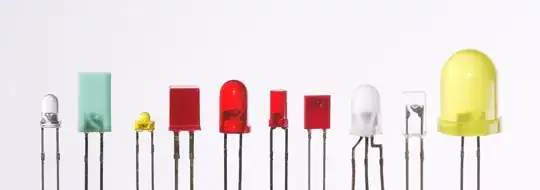An LED is a light-emitting diode. Lighting an LED is considered the "Hello world" of a circuit design, and it can be as simple as using a series resistor, or it can get more complicated, involving PWM and multiplexing.

Usage
An LED is the most common opto-electronic device, which generates light from the electron-hole recombination mechanism in the P-N junction.
LEDs have long been used as indicator lights, but in recent years high-power LEDs are being used as incandescent lamp replacements.
Theory of operation
The color is determined by the energy gap between conduction and valence band of the semiconductor used, which determines the energy that the photon generated by the recombination mechanism has.
Being a diode, it's characterized by a threshold voltage (of about 1.8 to 5 V depending on the color), below which the current is nearly zero, and beyond which the current increases exponentially. In a first approximation, the voltage is considered almost constant and equal to the threshold.
Most LEDs require current limiting, for which a series resistor can be used.
Schematic Symbol

Notes
- For questions about a specific part, please link to the datasheet.